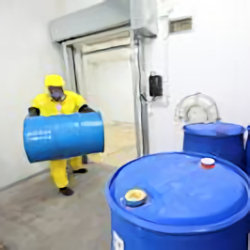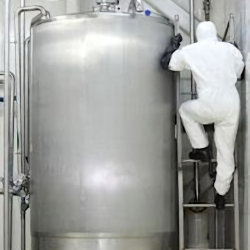Container Labeling
Container labeling is a very effective method to communicate the physical and health hazards of chemicals used in the workplace.


The information on a container label will vary depending on what type of container it is and how it is used. We'll discuss labeling requirements under the HCS (also referred to as GHS) labeling requirements in this module.
The various types of container and associated labels that will be discussed in this module include:
- Primary (Shipped) containers: Labels are found on the shipping containers and containers received for use.
- Secondary (Workplace) container: Labels are found on employer-made containers, such as a smaller container used to store a chemical. For example, a spray bottle containing a chemical used during a manufacturing process would be a secondary container.
- Stationary container: Labels are typically found on large, fixed tanks. These containers cannot be readily moved and may be secured in place.
- Portable containers: Used to transfer a chemical from one location to another to be used immediately. Portable containers cannot be used to store chemicals. Portable containers are not required to have a label. For example, a beaker used to transfer a chemical from the secondary container to a workbench for immediate use does not require a label.
Knowledge Check Choose the best answer for the question.
2-1. Which of the following containers cannot be used to store chemicals?
You forgot to answer the question!
